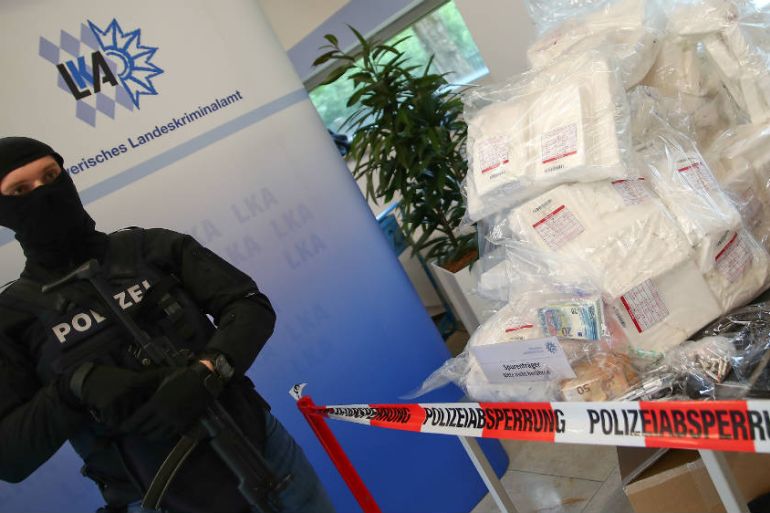Europe fights the ‘Uberisation’ of cocaine trade
Purity is at its highest in years, as competition between dealers leads to innovations in cocaine trade, EU agency says.

European authorities are seizing record quantities of cocaine, according to a report by the European Union drugs agency published on Tuesday.
The European Monitoring Centre for Drugs and Drug Addiction (EMCDDA) said the availability of drugs in Europe is on the rise, partly fuelled by new distribution methods and the “Uberisation” of the drugs trade.
Keep reading
list of 4 itemsWhat to know about Chinese Olympic swimmers’ doping scandal
West Africa’s Sahel becoming a drug trafficking corridor, UN warns
Behind India’s Manipur conflict: A tale of drugs, armed groups and politics
The agency also said the purity of the cocaine seized has reached its highest level in a decade.
According to the most recently available data, EU authorities seized 140 tonnes of cocaine in 2017, the highest level ever recorded and twice as much as in 2016. Prices, on the other hand, have remained stable at retail level ranging from $54 a gram in the UK to $117 a gram in Sweden.
While raw survey data – which comes from local agencies across EU countries, Norway and Turkey – does not show evidence of increased use, other indicators suggest that consumption may also be on the rise.
“For example, we see from wastewater data that metabolised cocaine increased in 22 of the 38 cities [for which] we had data. So, that suggests its possible use is also increasing,” Andre Noor, head of sector, trends and analysis at the agency’s public health unit told Al Jazeera. Surveys aren’t carried out every year, he added.
The largest quantities of cocaine were seized in Belgium (45 tonnes) and Spain (41 tonnes), marking a diversification of routes.
“The trafficking line, routes, are more multifaceted than before,” the agency’s director, Alexis Goosdeel, told journalists on Tuesday.
Until four years ago, more than 50 percent of cocaine confiscations took place in Spain, but countries such as Turkey have registered an increase in recent years.
“There are some suspicions that part of the cocaine that is arriving in Europe today [does not have] Europe as the final destination, but other geographic regions like Asia or the Middle East,” Goosdeel said.
Increasingly, trafficking takes place through ports using shipping containers. The port of Antwerp in Belgium is a major hub for cocaine smuggling, the report said.
Goosdeel pointed out there had been an increase in the production of cocaine in Colombia, which remains the world’s top producer, while the use of new retail methods is increasingly widespread.
“What we see is that, more and more, the internet, and notably the Darknet is used for buying and selling drugs,” Goosdeel said. While this market is still relatively small, its share doubles year on year, he added.
“Today, there is a much more systematic and organised way of using the internet, and that is part of increasing competition.”
|
|
This increased competition has led to what the report calls an “Uberisation” of the cocaine trade in which “sellers compete by offering additional services such as fast and flexible delivery options”.
The agency also flagged concerns about increased use of crack cocaine, with the number of clients entering treatment on the rise since 2014 in Belgium, Ireland, France, Italy, Portugal, and the UK. It is in the UK where crack use is most widespread, said the report. The UK is also the European country with the highest number of overdose deaths.